The OP Stack Factor: Powering Ethereum’s Leap Towards 2.0

As we know, the top selling point for any Layer2 rollup framework (be it for optimistic or zero-knowledge technology) is Ethereum-compatibility along with the ability of L2 chains to settle on Ethereum to inherit its high-staked security, decentralization, and liquidity. Let’s talk about one such most-suited and ready L2 rollup framework; OP Stack in this article. First, we will discuss the rollup-specific vision of the Ethereum 2.0 ecosystem and then the value proposition of the OP stack framework in putting Ethereum in steroid.
Spotlighting Ethereum 2.0 and its rollup-centric vision
Ethereum 2.0 or ETH2 presents next-generation upgrades on the Ethereum protocol. It entails notable changes such as:
- Transitioning the network from proof-of-work (PoW) to proof-of-stake consensus. This has allowed the network to be secured by validators instead of miners, which will obviously reduce the energy requirement while also making the ecosystem highly resilient.
- Introducing a whole new structure for L2 chains running on Ethereum. It includes a beacon chain that interacts with all other chains through several ‘shards’ or the sharded blockchains. This approach of breaking down the network in shards and allowing parallel transaction execution, Ethereum has increased the network throughput and capacity of its network significantly.
That’s all about Ethereum 2.0’s features; now let’s talk about its rollup-centric aspect. Ethereum researchers already predicted the rollups revolution back in 2019 and therefore Ethereum’s co-founder Vitelik Buterin called rollups as the end game for blockchain scalability. Considering this, Ethereum made some modifications to its roadmap. With 2.0 upgrade, Ethereum’s initially planned that Ethereum as a full-fledged blockchain will cater to the scalability requirements and all the L2 chains will achieve unprecedented scalability through various shards.
Later, seeing the innovative rollups’ concept and its tremendous growth, Ethereum decided that transactions from end users will be computed on the L2 rollup chain, not Ethereum. However, final execution and validation will be carried out on L1 Ethereum. Using sharding, Ethereum had the aim to achieve 3000 TPS, but rollups + sharding can allow Ethereum to achieve up to 1,00,000 TPS. Due to this, most of today’s rollup frameworks like Polygon CDK, Arbitrum Orbit, Zk stack Hypechain, and OP Stack allow L2s to use EThereum as their base layer and all of them focus on maintaining EVM compatibility.
How OP Stack is adding value to the Ethereum ecosystem?
As we discussed, OP Stack is the most Ethereum-aligned rollup framework. Thus, it focuses more on L2 development. If we look at the numbers, OP Stack currently has 26 live chains, out of which just 2 are built as Layer3 and the rest 24 are L2s. Similarly, if we talk about another popular optimistic rollup; Arbitrum orbit– it has 21 live chains out of which 9 are Layer2s and 12 are Layer 3s. This analysis highlights the fact that OP Stack is more into favor of L2s choosing Ethereum as their base layer, instead of OP mainnet. However, OP stack has recently announced their support for L3s superchains.
The demand for OP Stack Layer2s have even increased upon arrival of ‘Fault Proofs’ and Stage 1 upgrade. You may know that, permissionless fault proof systems allow OP Stack chains to enable ETH and ERC-20 withdrawal in a purely permissionless manner while Stage 1 transitions OP rollups to be governed through smart contracts. All these updates make the OP Stack ecosystem a lot more mature and secure at the same time.
Now that we know about the OP Stack framework adding value to Ethereum 2.0, let’s also dive a little deeper into these values. This will give you a comprehensive view of what main benefits OP Stack L2s can drive to its base Layer1 ecosystem:
1- Accelerating Ethereum’s revenue through gas fee, DA cost, and more:
In Q1: 2024, Ethereum revenue was recorded at a whopping $365 million in Q1, 2024 while Ethereum’s fee has seen an increase of 58% since 2017. OP Stack, being a highly Ethereum-aligned framework, also contributes to this profit considerably. If we look at the very recent data from Token Terminal, it mentions that $7B+ value has been bridged from Ethereum Layer1 to the OP stack superchains (between July21 to Apr, 24). Additionally, each OP Stack chain within the superhains ecosystem contributes to more than 2.5% of Layer2 revenue and 15% of the gross profit of the Optimism. For such a huge transaction, Ethereum definitely makes a good amount of revenue as transaction or gas fee.
Likewise, Ethereum also receives DA fees from OP Stack using Ethereum DA for seamless data availability. Here, OP Stack L2s have the option to store data on-chain as ‘calldata’ or post them as blobs using EIP-4844 for cheaper storage. For both the instances, chains need to incur certain DA cost for data storage and 100% availability. For example, calldata on Ethereum Layer1 currently costs around $26.22. Another main source of revenue is sequencing for MEV that we’ve discussed separately below.
2- Leveraging Ethereum’s PoS consensus for L2s:
By allowing L2 rollup chains to use Ethereum as the settlement layer, OP Stack maximizes the growth of its PoS consensus in addition to ecosystem growth, and eventually the revenue. For example, if an OP Stack L2 leverages Ethereum’s PoS consensus on Ethereum to secure its network, it will require adding more validators on Layer1 and thus increased staking from them. Hence, if more L2 solutions use Ethereum as base layer, it will lead to more ETH being staked and thereby increase in network’s overall profit.
3- Offering Ethereum MEV system to L2 rollups :
One of the critical challenges of OP stack structure is the centralization of sequencer which could lead to bad MEV such as front-running attacks even more after the 2-second block production of Bedrock upgrade. To overcome this, OP Stack allows L2 to become L1-sequenced and opt for decentralization to protect MEV. L2 rollups can reuse the Ethereum’s searcher-builder-proposer naturally and thus assign the accountability of performing MEV to the block builders on L1. MEV is right now one of the main USPs of Ethereum, which makes a way for a really good revenue stream for Ethereum validators as the opportunities does not come across any middleman, instead it is entirely captured by the block proposers.
4- Onboarding more web3 users with easily scalable L2s:
In the past few years, we have seen several projects (L1 and L2s) migrating over a rollup-based ecosystem with the OP stack. A recent example is Cero, which is migrating to Ethereum L2 built with OP Stack from its L1 blockchain. A common reason for migration in all these projects is the ease of scaling which allows chains to onboarding millions or even billions of web3 users seamlessly. DeFi and web3 gaming chains often need to scale to cater to the massive traffic on their dApps, but doing this is still a challenge with Ethereum due to lack of modularity and high congestion. OP stack solves this through its modular architecture where L2 chains can adjust the scalability as per the traffic. This way, OP Stack allows Ethereum L2s to scale endlessly and onboard web3 users without any challenges.
5- Making Ethereum tools and resources widely accessible:
Post-bedrock upgrade, OP Stack has geared up to become even more aligned towards Ethereum and hence it allows OP Stack developers a fully Ethereum-equivalent experience by making Ethereum’s codebase, comprehensive tools, frameworks, and resources available for them. This increases the usability of Ethereum tools and introduces them to the global web3 community, driving direct value to Ethereum.
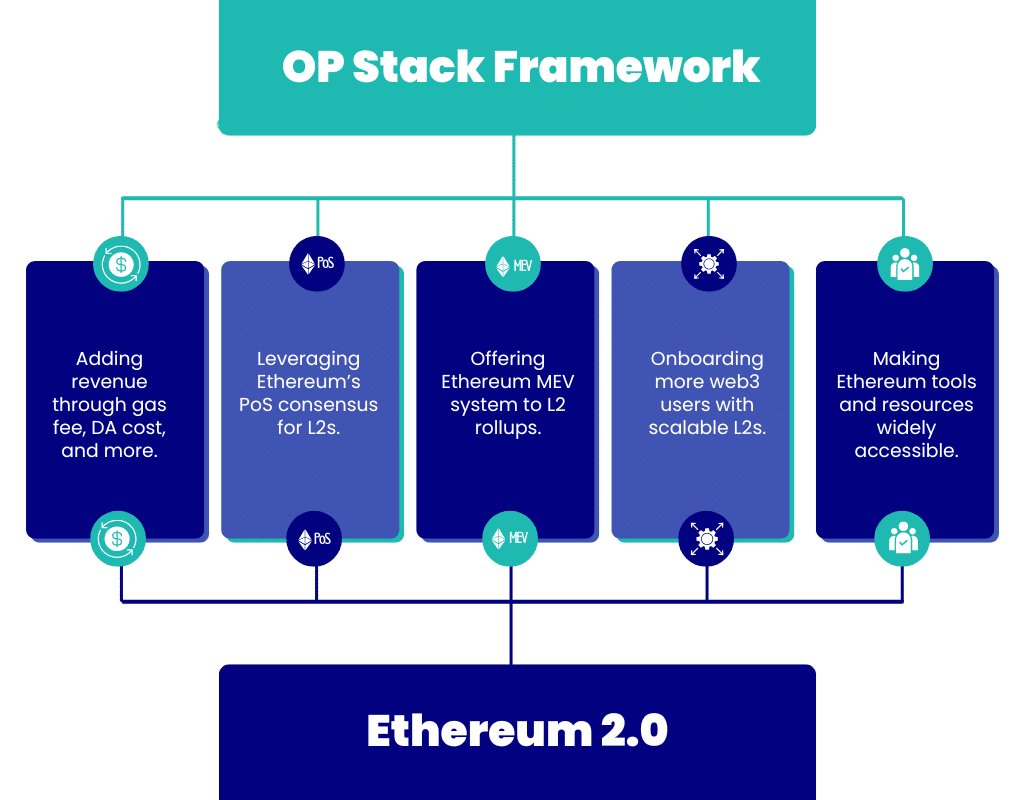
Launch your Ethereum L2 with OP Stack using Zeeve RaaS
Here, our analysis of OP Stack & Ethereum 2.0 concludes. We have seen the whole concept about how the OP stack framework is adding value to Ethereum and why OP Stack chains are one of the preferred options for web3 projects. Now, if your next step is to launch an OP Stack L2 or even L3, explore Zeeve RaaS once. Leveraging the RaaS services from Zeeve, you can save up to 60% in total cost and time-to-market for your chain, which can be 97% faster. Plus, to support end-to-end modularity, Zeeve RaaS has integrated support for 40+ 3rd party rollup services such as off-chain DA layer, customizable block explorers, MPC wallets, decentralized sequencers, account abstraction (AA) SDKs, and more. For a seamless launch, you can set up a full-fledged testnet with Zeeve’s 1-click deployment sandbox tool. For any queries or to discuss your project requirements, feel free to reach our experts anytime.



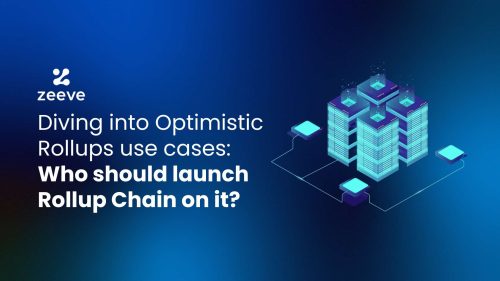
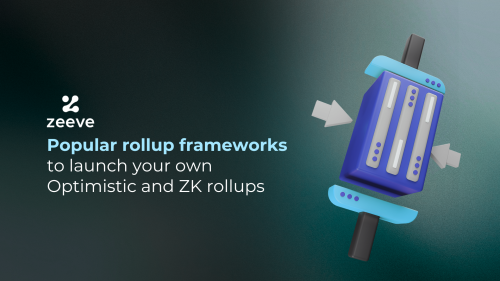
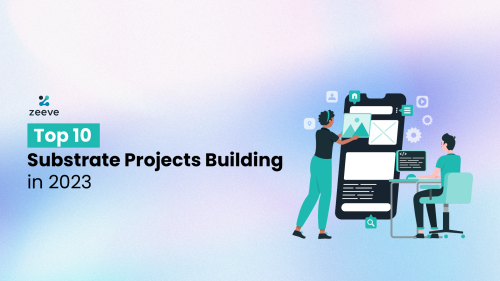
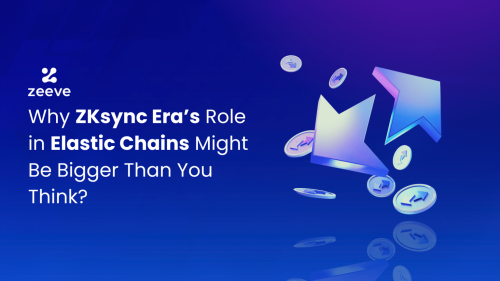
Responses